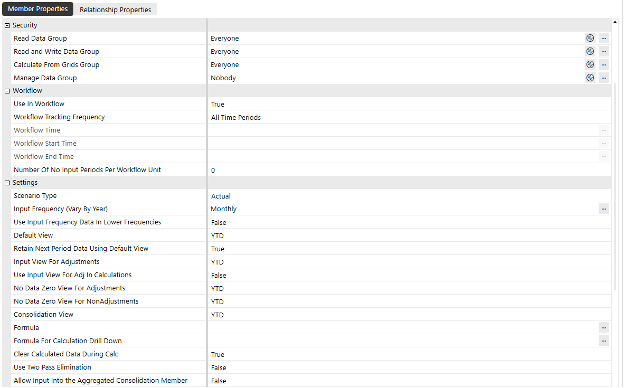Scenario Dimension
A Scenario in OneStream represents a distinct dataset such as Actual, Budget, or Forecast, which is used to analyze and compare financial results. Each scenario exists within the Scenario dimension, which organizes them without consolidation and supports hierarchical grouping for easier navigation.
Scenario Types
OneStream offers predefined scenario types that can be used across all cubes. Common examples include Actual, Budget, Forecast, Variance, Plan, History, and Operational, among others. Each scenario type can contain any number of scenarios, such as Actual FY24 or Forecast Q3. While the types are fixed and cannot be renamed, you have the flexibility to define scenario names and link them to a type. The system interprets types based on their function rather than their meaning.
Organizing Scenarios
- Scenarios can be arranged in hierarchies for convenience, though hierarchical aggregation does not apply.
- You may create named scenarios tied to a type (e.g., Budget2025 under type Budget), giving clarity to their usage.
Scenario Member Properties
Each scenario offers customizable properties that drive behavior:
- Security: - control access via data view, modify, calculate, and manage permissions.
- Workflow: - configure visibility and period display in OnePlace:
- Use in Workflow: toggle visibility
- Tracking Frequency: select period scope (e.g., monthly, quarterly, range)
- No-Input Periods: lock early periods (e.g., first 3 months of forecast from Actual)
- Settings: - includes input frequency (monthly, quarterly, yearly, and vary‑by‑year), default view (periodic vs YTD), and options like input propagation to lower‑level periods.

Input Behavior & Data Handling
- Input Frequency defines granularity (monthly/quarterly/yearly) and can differ by year.
- Using Input Frequency Data in Lower Frequencies can populate finer periods from broader inputs (e.g., quarterly to monthly).
- Default View Behavior ensures sequential data consistency across periods (YTD vs periodic transitioning).
Hybrid Scenarios
OneStream supports hybrid scenarios for performance and simplified reporting:
- A target scenario can share or copy data from a source scenario.
- Data binding keeps the copy current or static based on processing, useful for alternate versions, “what-if” analyses, or summarized subsets.

Best Practices & Application
- Name scenarios clearly to reflect their purpose (e.g., Budget2025, Forecast‑Q3).
- Let security roles align with scenario access needs.
- Organize scenarios hierarchically for ease of use.
- Use workflow settings to manage which periods users can view and enter data.
- For alternate versions or slices, leverage hybrid scenarios to optimize storage and performance.